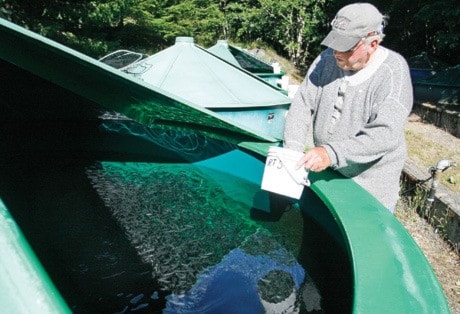This year’s salmon run marks the first coho salmon to return since the massive fuel spill in Goldstream Park.
“We are very concerned about the coho, the adults returning are the juveniles from the fuel spill,” said Peter McCully, technical adviser for Goldstream Hatchery. “We have no idea what it’ll look like until later.”
On April 16, 2011, a fuel truck crash on the Malahat spilled 42,7000 litres of fuel into the Goldstream River. Hours after 8,000 hatchery fish were released into the river. Throughout that week about 20,000 fish were released. This will be the first year the repercussions of the spill will be seen in fish, though last year about 800 were counted in the river.
“Last year the coho weren’t affected by the fuel spill,” McCully said.
While McCully waits to see the first glimpse of how the fuel spill affected the fish, he is also concerned low water levels will affect the salmon run.
“The water is so blessedly low the fish won’t come in it,” McCully said. “The fish need a change in the weather.”
Sometimes when the barometric weather system brings in a low pressure system it can encourage the fish to migrate, McCully explained.
The rain last weekend won’t affect the river water levels, it may add a “fresh water lens” on the ocean encouraging the fish to swim up stream. The ground is so dry the water is just absorbed and didn’t run into the rivers.
“The Goldstream River is impounded (with three dams) it’s not a natural river,” McCully said. “We are releasing water at critical times.”
With low water levels, the Capital Regional District allowed the hatchery to release water, but McCully is unsure how much water the hatchery will be allowed to release.
McCully is asking all residents of the CRD to start conserving water in their homes, so more can be released into the river to aid the salmon spawning.
“Look after the water you use in your home. CRD Water will be more flexible with the water we release in the river (if less water is being consumed,)” McCully said.
